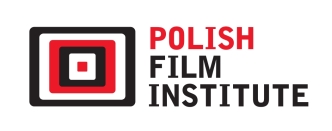Who Controls the Digital Train? Digitization of Movie Theaters as a Distribution Project
Miłosz Stelmach
milosz.stelmach@gmail.comJagiellonian University (Poland)
https://orcid.org/0000-0003-4004-7121
Abstract
The article aims to show the process of digitalisation of distribution as a kind of game between the interests of powerful actors of the film market – producers, distributors, service providers and cinema owners – as a result of which the current distribution model as well as technical parameters and procedures defining it have been developed. This expensive and complicated process required coordinated action by many stakeholders, able to operate on a global scale and interested in conversion for business reasons. Its first stages took place in the first years of the 21st century and include among others the establishment of the Digital Cinema Initiative by the most important Hollywood studios and the acceptance of the DCP format. They show that this process has been almost entirely agreed and imposed on the rest of the world by members of Hollywood’s “Big Six”, which are the largest film studios, as often competing as cooperating with each other. The way in which they have carried out the global conversion of cinema from analogue to digital medium can be a test of power relations in the American (and global) film industry, for which – contrary to intuition – distribution remains the most important and influential link.
Keywords:
film market, digitization of movie theaters, Digital Cinema InitiativeReferences
Adamczak, Marcin, Globalne Hollywood. Filmowa Europa i polskie kino po 1989 roku, słowo/obraz terytoria, Gdańsk 2010.
Google Scholar
Baker Nicholson, The Projector, “The New Yorker” 1994, 21 of March.
Google Scholar
Bordwell, David, Digital Pandora Box. Films, Files, and the Future of Movies, The Irvington Way Institute Press, Madison 2012.
Google Scholar
Bordwell, David, Thompson, Kristin, Film Art. Sztuka filmowa. Wprowadzenie, transl. B. Rosińska, Wydawnictwo Wojciech Marzec, Warszawa 2010.
Google Scholar
Casetti, Francesco, The Lumiere Galaxy. 7 Key Words for the Cinema to Come, Columbia University Press, New York 2015.
DOI: https://doi.org/10.7312/columbia/9780231172431.001.0001
Google Scholar
Denson, Shane, Leyda, Julia, Post-Cinema. Theorizing 21st Century Film, REFRAME Books, Brighton 2016.
Google Scholar
Elsaesser, Thomas, Hagener, Malte, Teoria filmu: wprowadzenie przez zmysły, transl. K. Wojnowski, Universitas, Kraków 2015.
Google Scholar
Gaudreault, Andre, Marion, Philippe, The End of Cinema? A Medium in Crisis in Digital Age, transl. T. Barnard, Columbia University Press, New York 2015.
DOI: https://doi.org/10.7312/columbia/9780231173575.001.0001
Google Scholar
Gunning, Tom, Moving Away From the Index: Cinema and the Impression of Reality, “differences” 2007, no 18 (1).
DOI: https://doi.org/10.1215/10407391-2006-022
Google Scholar
Helman Alicja, Ostaszewski Jacek, Historia myśli filmowej. Podręcznik, słowo/obraz terytoria, Gdańsk 2007.
Google Scholar
https://nofilmschool.com/2014/05/quentin-tarantino-cannes-35mm-digital-projection-death-cinema
Google Scholar
https://www.bls.gov/news.release/archives/ocwage_03312017.pdf
Google Scholar
https://www.bls.gov/oes/bulletin_2006.pdf
Google Scholar
https://www.statista.com/statistics/271856/global-box-office-revenue/
Google Scholar
https://www.statista.com/statistics/271861/number-of-digital-cinema-screens-worldwide/
Google Scholar
https://www.youtube.com/watch?v=COr-a-Oj-vQ&t=1538s
Google Scholar
McKernan, Brian, Digital Cinema. The Revolution in Cinematography, Postproduction, and Distribution, Mc Graw-Hill, New York 2005.
Google Scholar
Rombes, Nicholas, Cinema in the Digital Age, Wallflower Press, London – New York 2009.
Google Scholar
Sulka, Iwo, Wymiary filmu. Nowoczesne techniki w salach kinowych, „Ekrany” 2018, no 5.
Google Scholar
The State of Post-Cinema. Tracing the Moving Image in the Age of Digital Dissemination, ed. Malte Hagener, Vinzenz Hediger, Alena Strohmaier, Palgrave Macmillan, London 2016.
Google Scholar
UNIC Annual Report 2017. Key Trends in European Cinema – https://www.unic-cinemas.org/fileadmin/user_upload/wordpress-uploads/2017/06/UNIC_AR2017_EN_online.pdf
Google Scholar
Authors
Miłosz Stelmachmilosz.stelmach@gmail.com
Jagiellonian University Poland
https://orcid.org/0000-0003-4004-7121
Doktor nauk o sztuce, asystent w Instytucie Sztuk Audiowizualnych Uniwersytetu Jagiellońskiego; redaktor naczelny czasopisma o tematyce filmowej „Ekrany”. Rozprawę doktorską poświęcił zagadnieniu późnego modernizmu w polskim kinie lat 70. oraz 80., zaś w swojej pracy naukowej zajmuje się tematyką filmowego modernizmu oraz przemianami współczesnego kina artystycznego.
Statistics
Abstract views: 542PDF downloads: 543
License
Copyright (c) 2019 Kwartalnik Filmowy

This work is licensed under a Creative Commons Attribution-NonCommercial-NoDerivatives 4.0 International License.
The author grants the publisher a royalty-free non-exclusive licence (CC BY 4.0) to use the article in Kwartalnik Filmowy, retains full copyright, and agrees to identify the work as first having been published in Kwartalnik Filmowy should it be published or used again (download licence agreement). The journal is published under the CC BY 4.0 licence. By submitting an article, the author agrees to make it available under this licence.
In issues from 105-106 (2019) to 119 (2022) all articles were published under the CC BY-NC-ND 4.0 licence. During this period the authors granted a royalty-free non-exclusive licence (CC BY-ND 4.0) to use their article in „Kwartalnik Filmowy”, retained full copyright, and agreed to identify the work as first having been published in our journal should it be published or used again.
Most read articles by the same author(s)
- Miłosz Stelmach, All You Can’t See: The Long Tail of World Cinema , Kwartalnik Filmowy: No. 117 (2022): Unknown/Hidden Cinema
- Miłosz Stelmach, The Second Coming of Sound? Nagra Tape Recorder and the Evolution of Sound in Postclassical Cinema , Kwartalnik Filmowy: No. 113 (2021): Film and Technology
- Agata Hołobut, Maciej Rapacz, Miłosz Stelmach, Working Titles. Computational Analysis of Film Titling Practices: A Polish Case Study , Kwartalnik Filmowy: No. 127 (2024): Empirical Film Studies
- Miłosz Stelmach, Cinema Counts: The Computational Turn and Quantitative Methods in Film Studies , Kwartalnik Filmowy: No. 127 (2024): Empirical Film Studies
- Miłosz Stelmach, On the Backroads of Adventure: Film Essay and Polish Cinema of the 1970s , Kwartalnik Filmowy: No. 104 (2018): Essay, Found Footage, Compilation Film
- Miłosz Stelmach, Fables for Robots: The Hare and the Tortoises , Kwartalnik Filmowy: No. 124 (2023): Streaming
- Miłosz Stelmach, In Search of Lost Time: The Prophetic Character of Gilles Deleuze’s Theory of Cinema , Kwartalnik Filmowy: No. 86 (2014): Dimensions of Time
- Miłosz Stelmach, The Haunted Screen: A Contribution to the Hauntology of Contemporary Cinema , Kwartalnik Filmowy: No. 96 (2016): Film and Metaphysics
- Miłosz Stelmach, Love Is at the Bottom of Everything: Existential Melodrama , Kwartalnik Filmowy: No. 89-90 (2015): Redefinitions of the Classics











